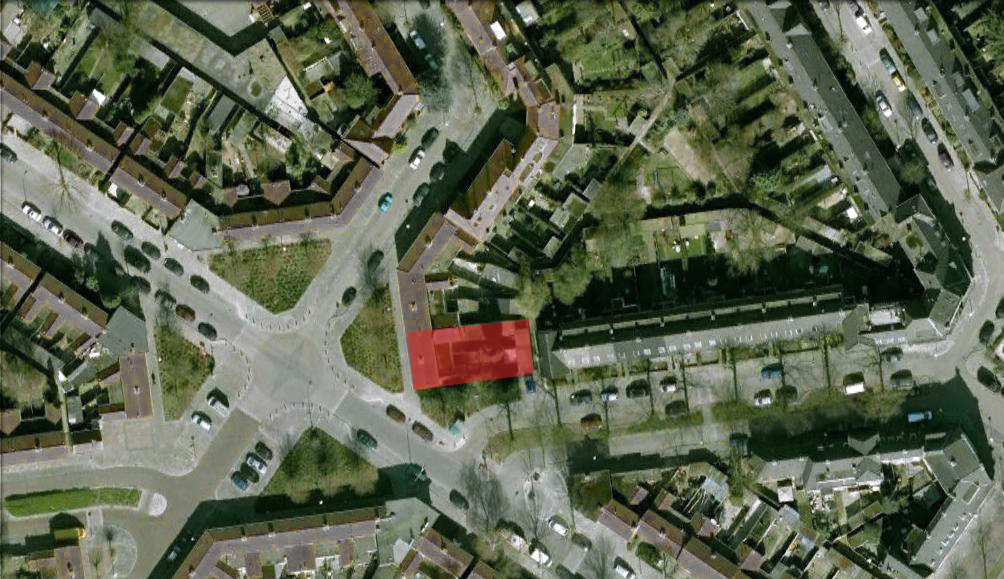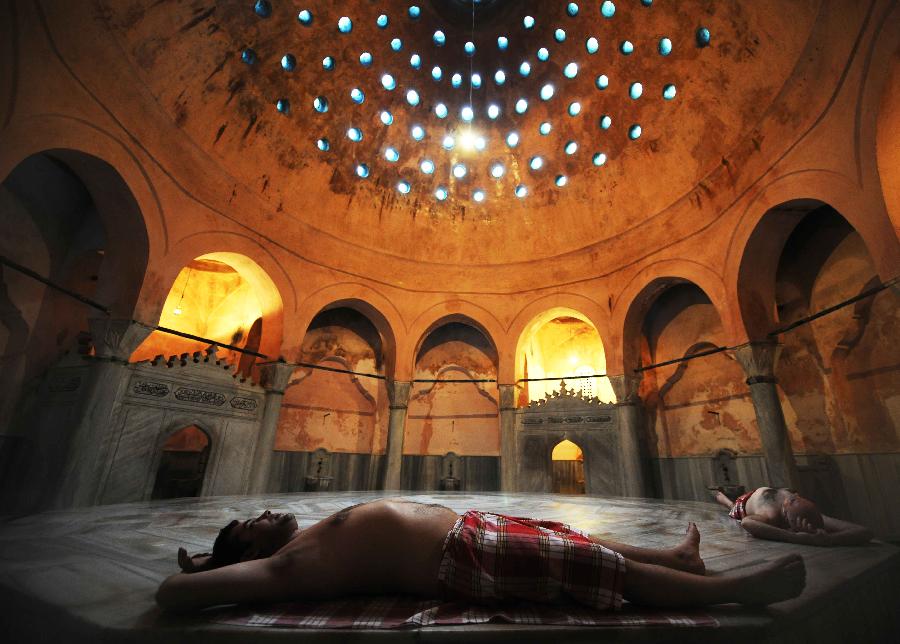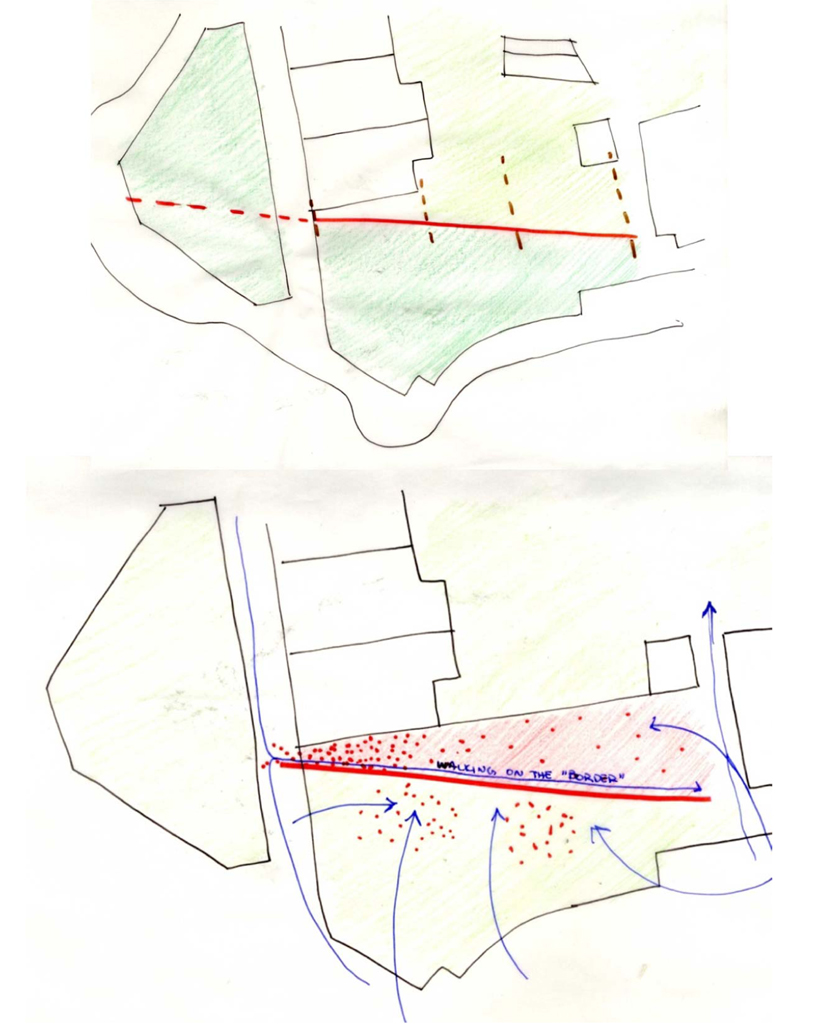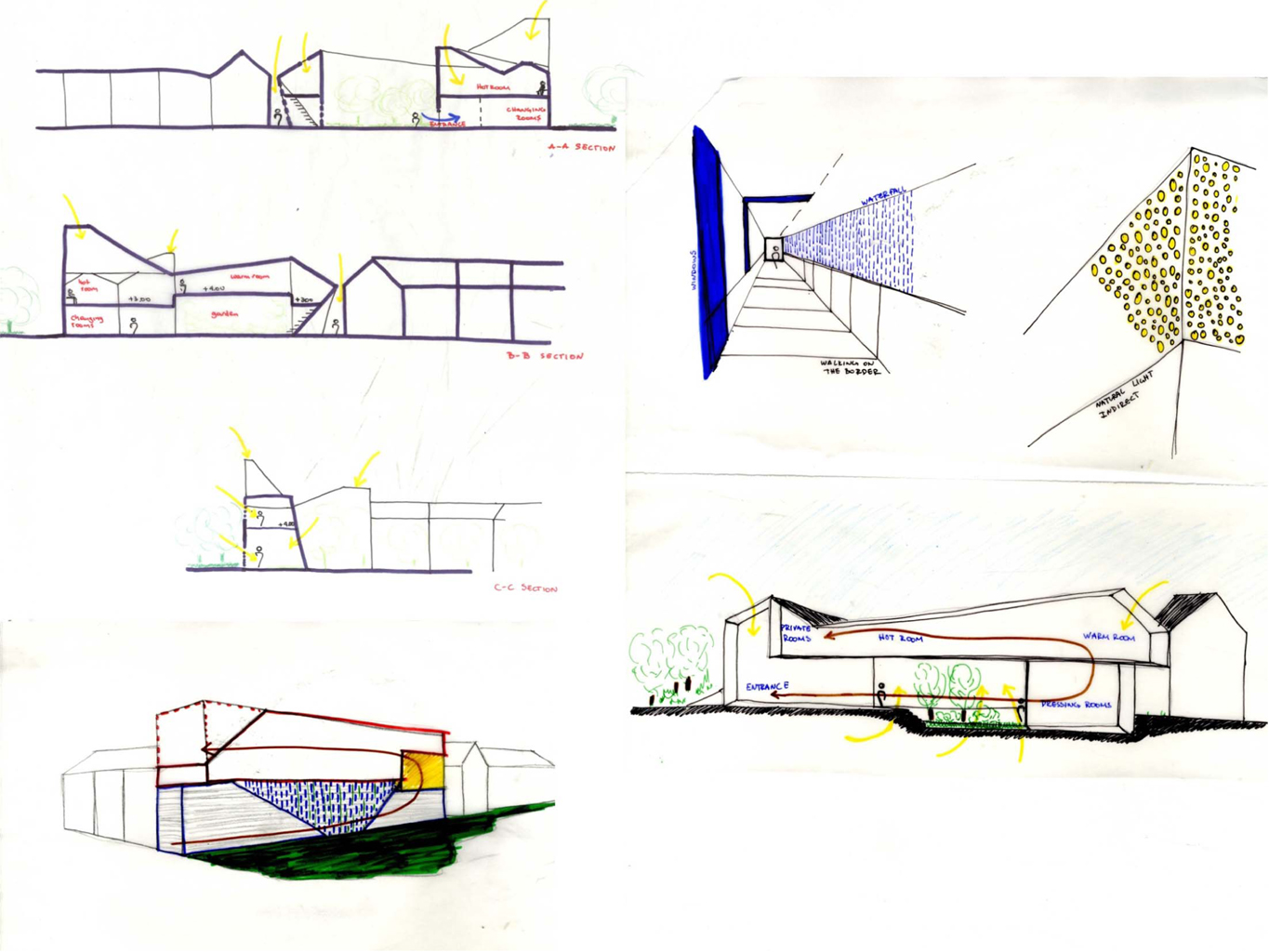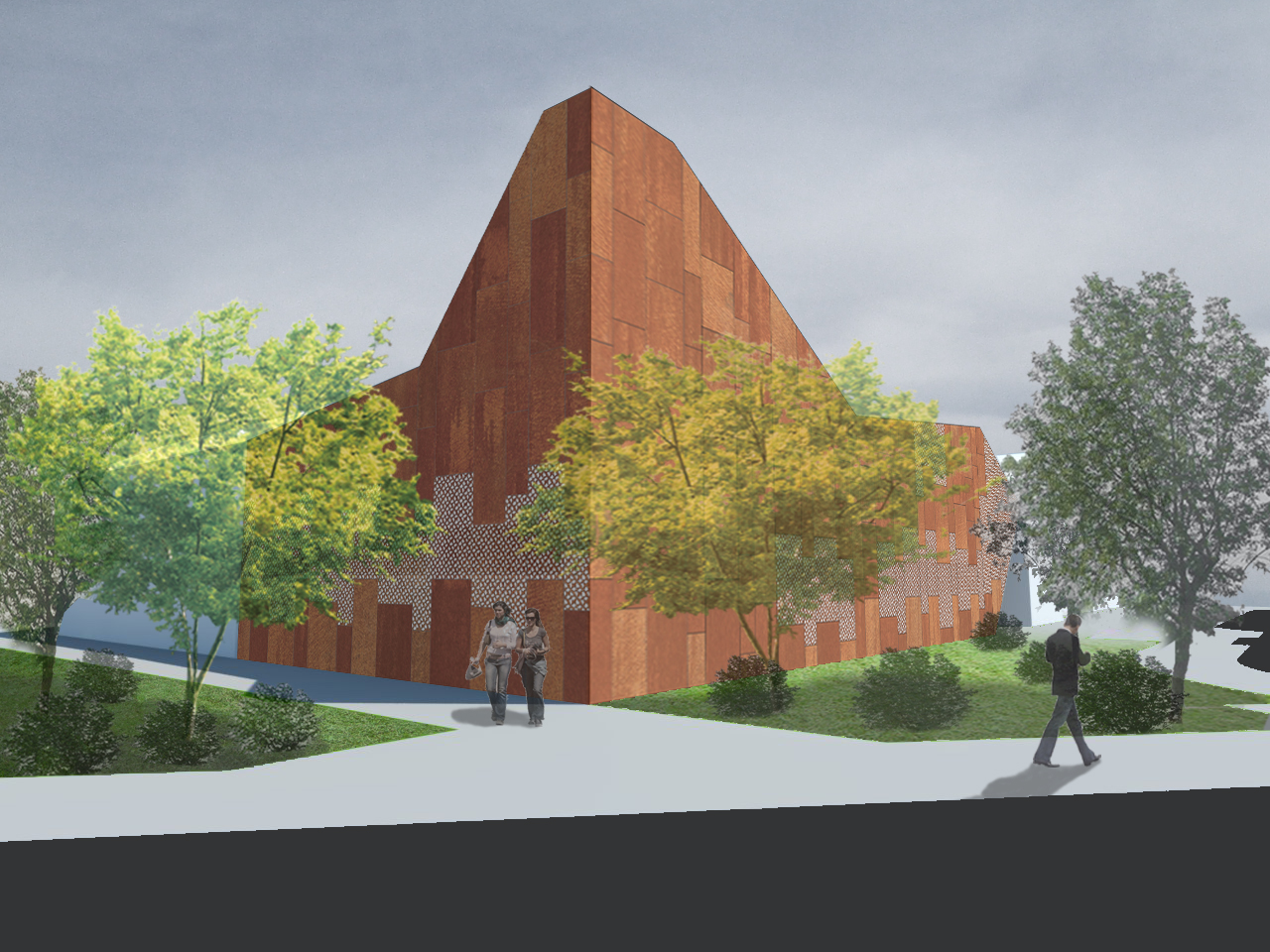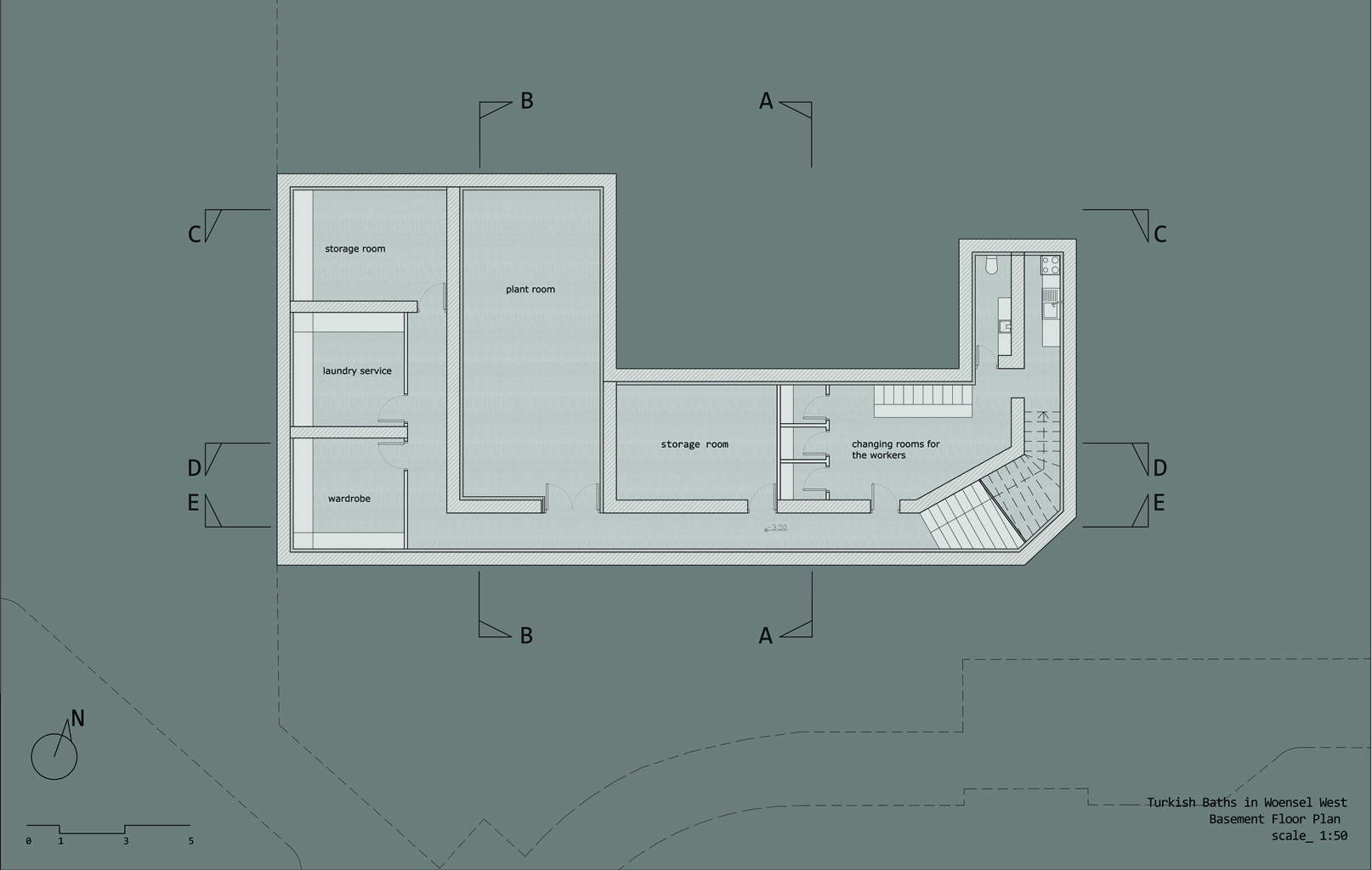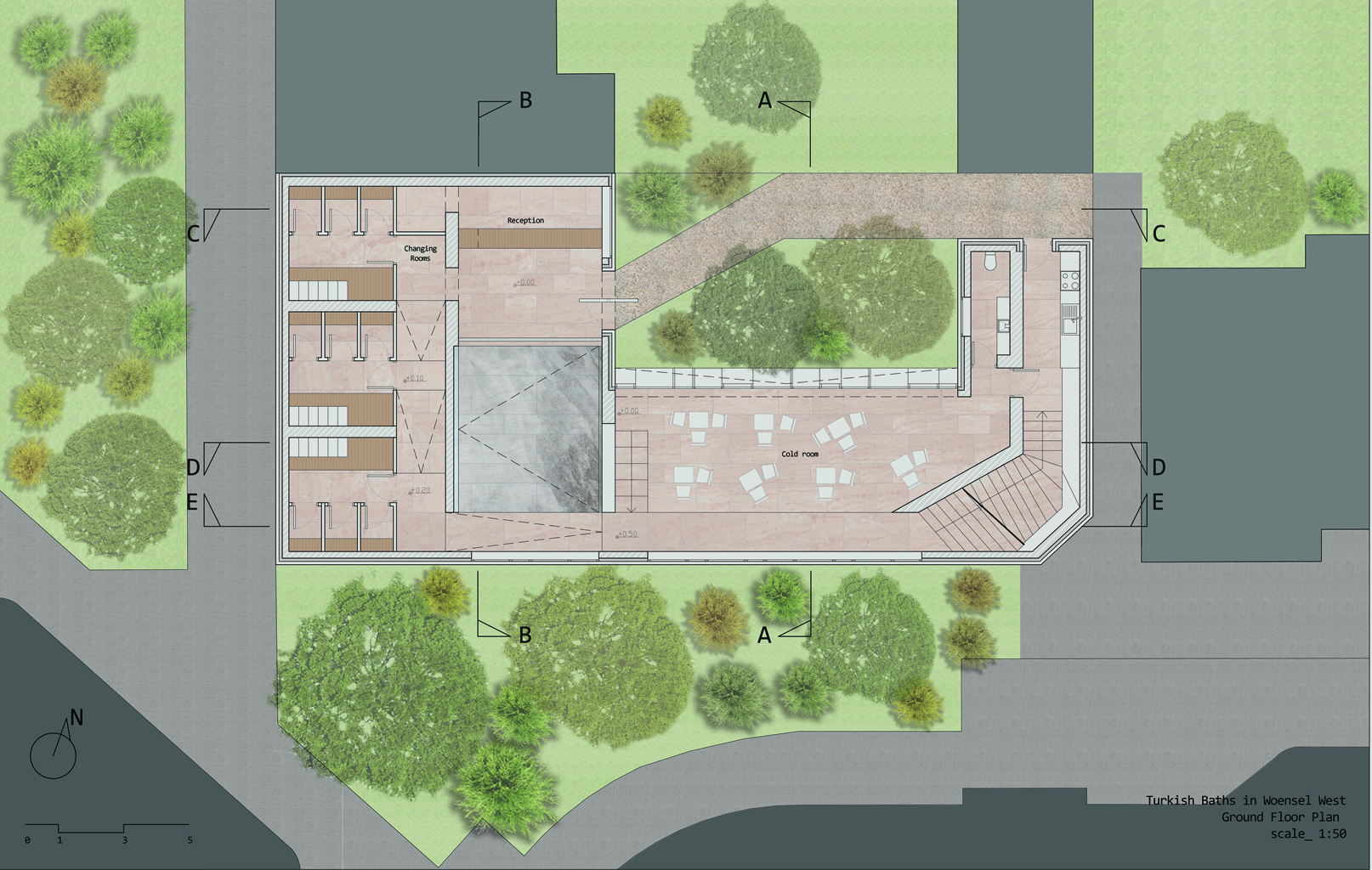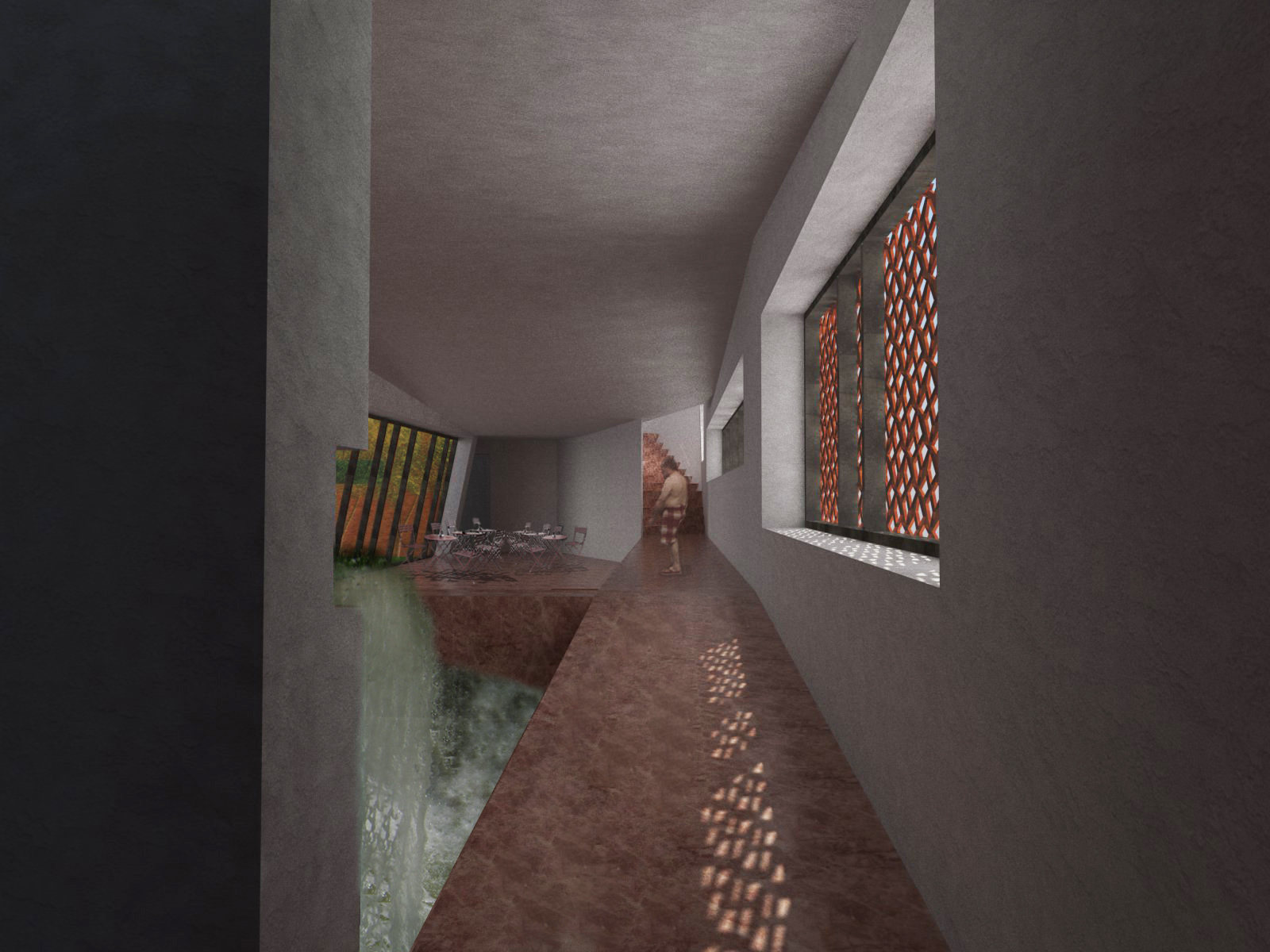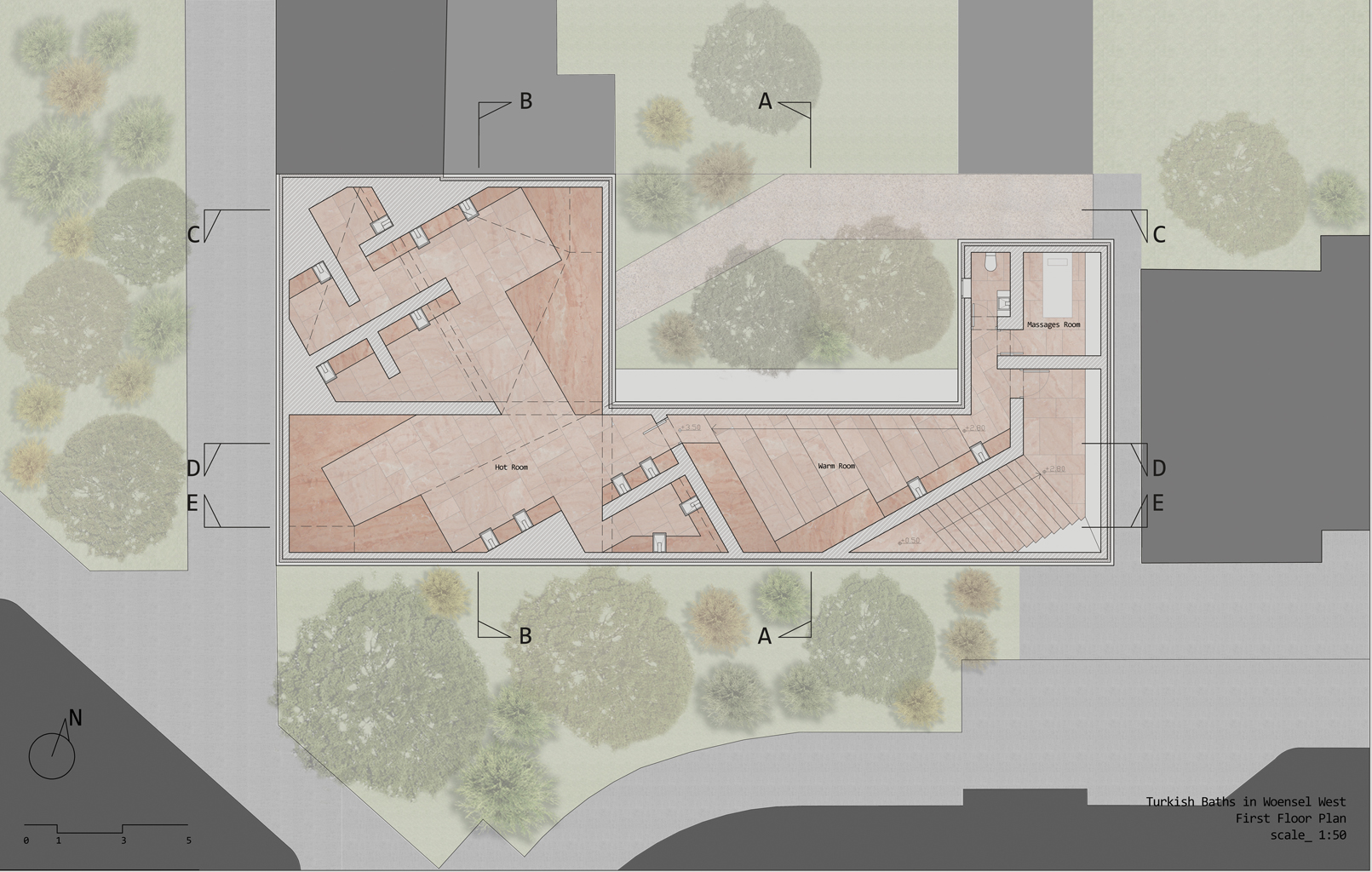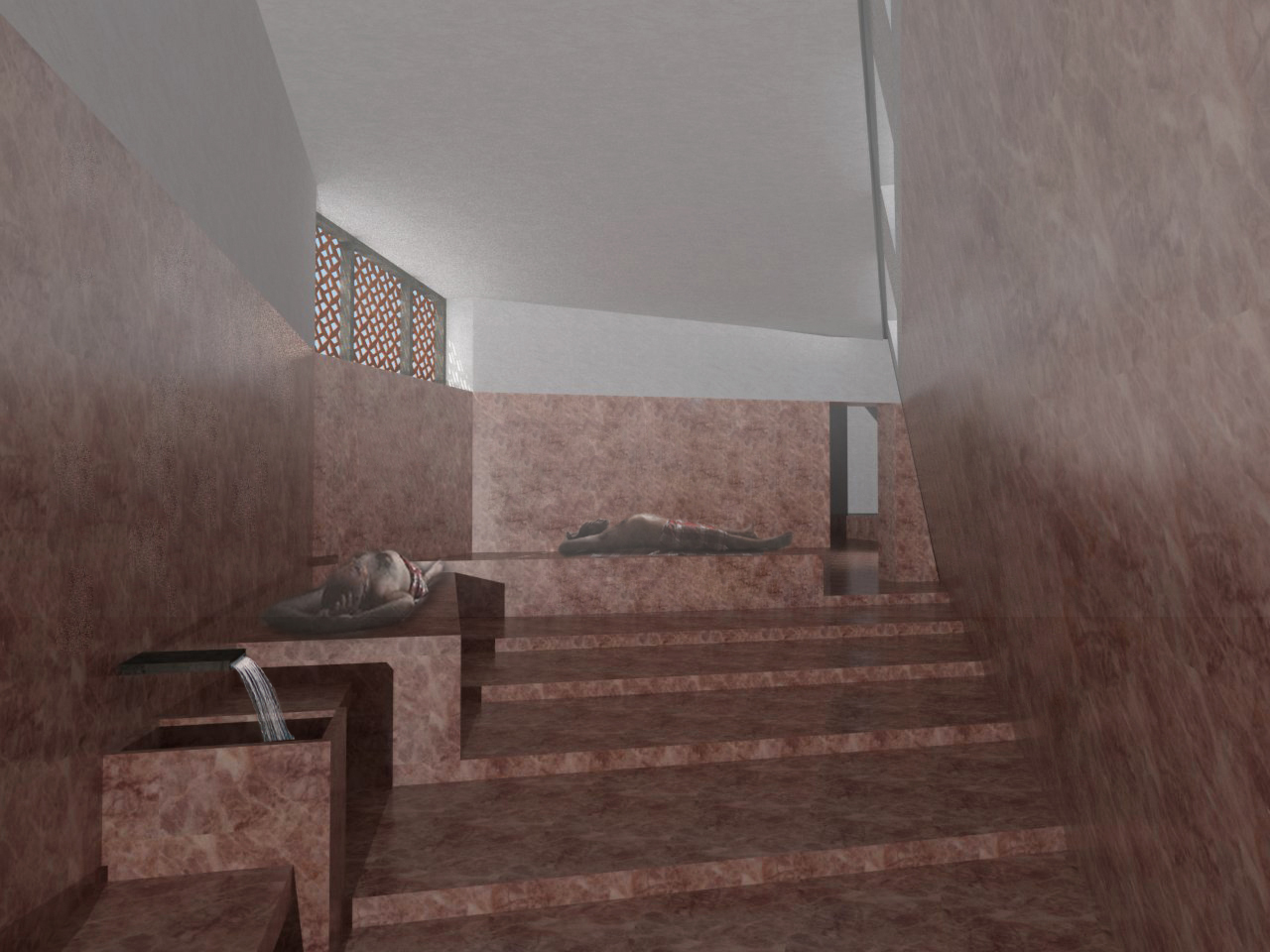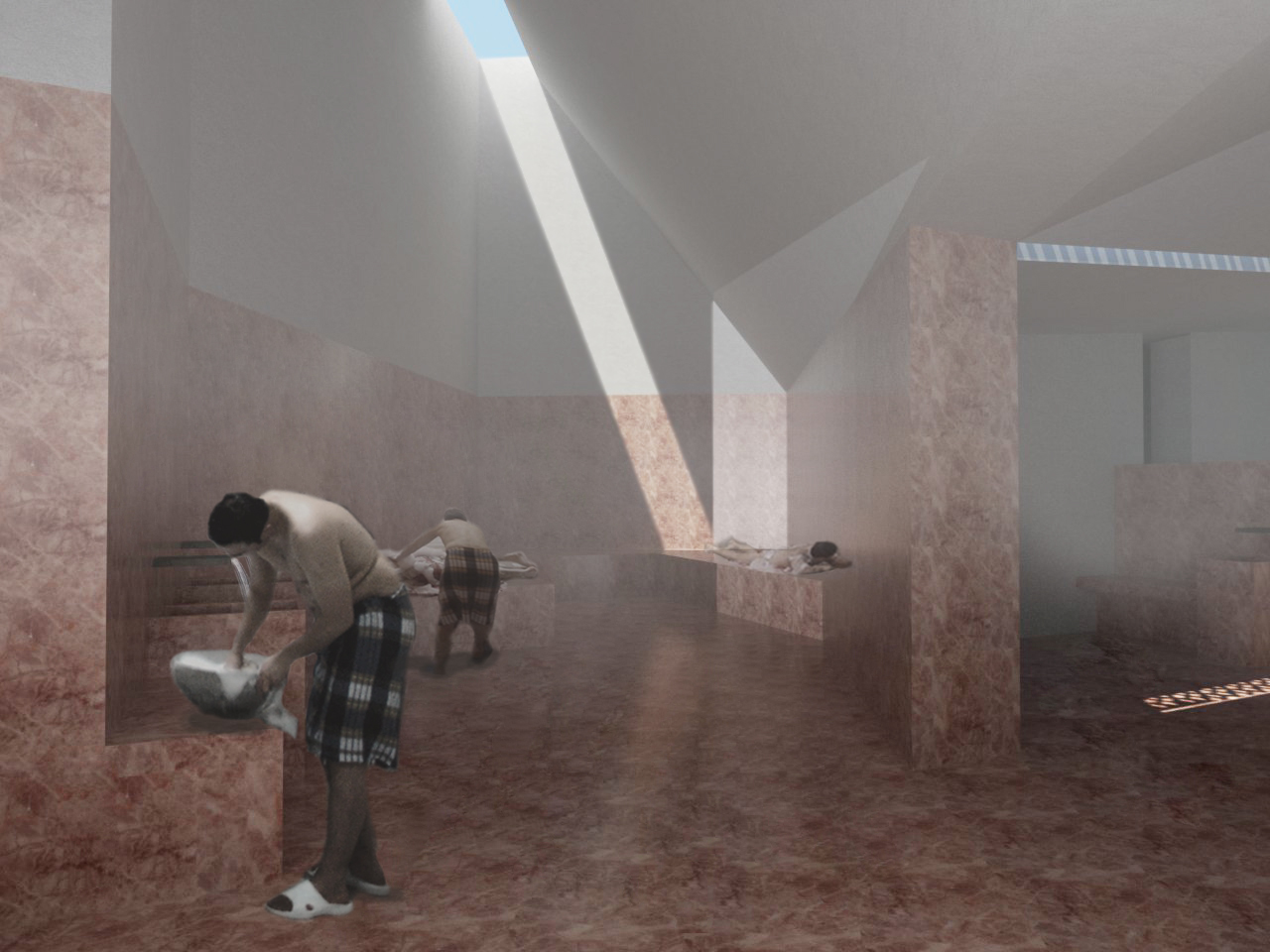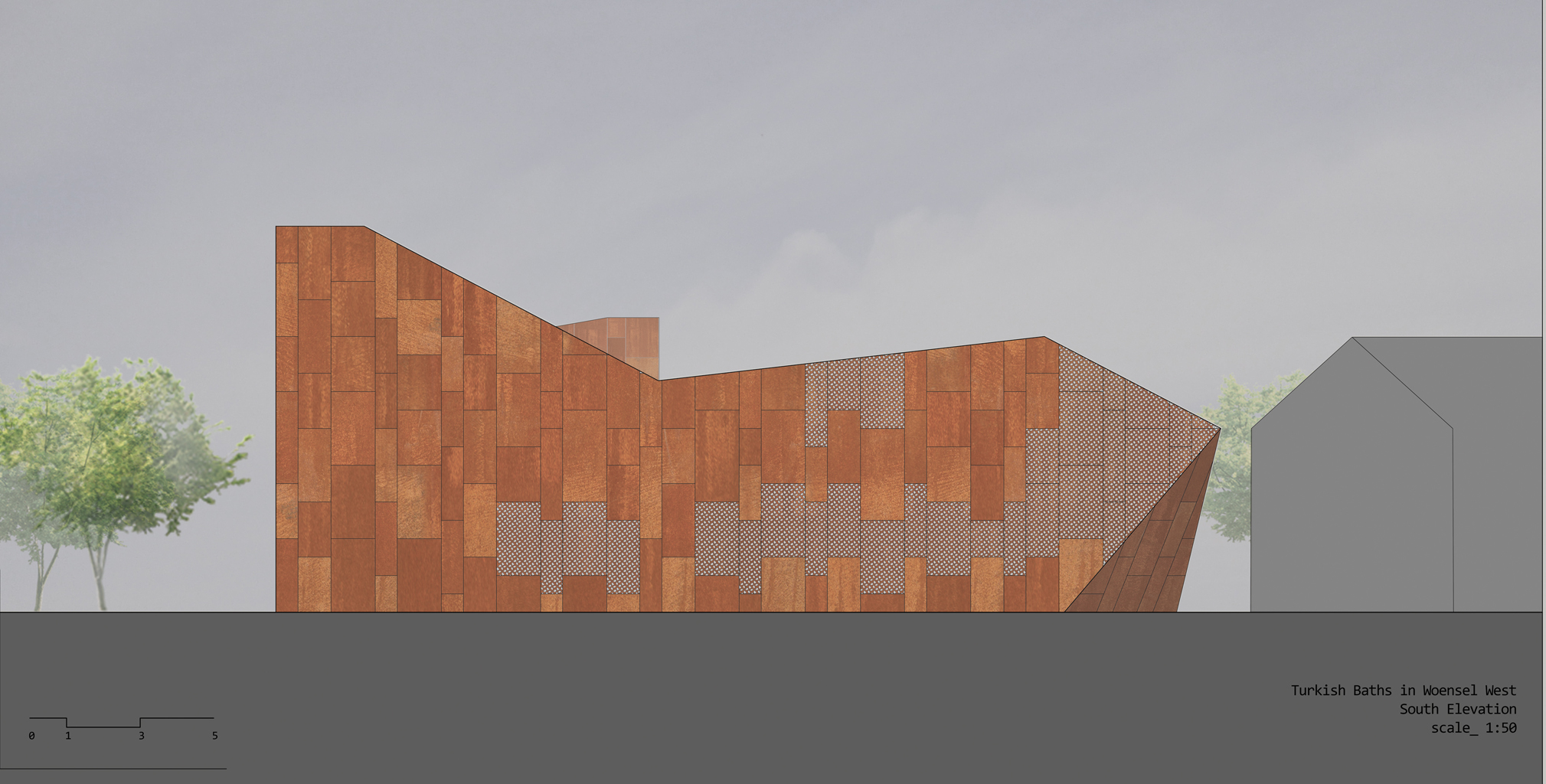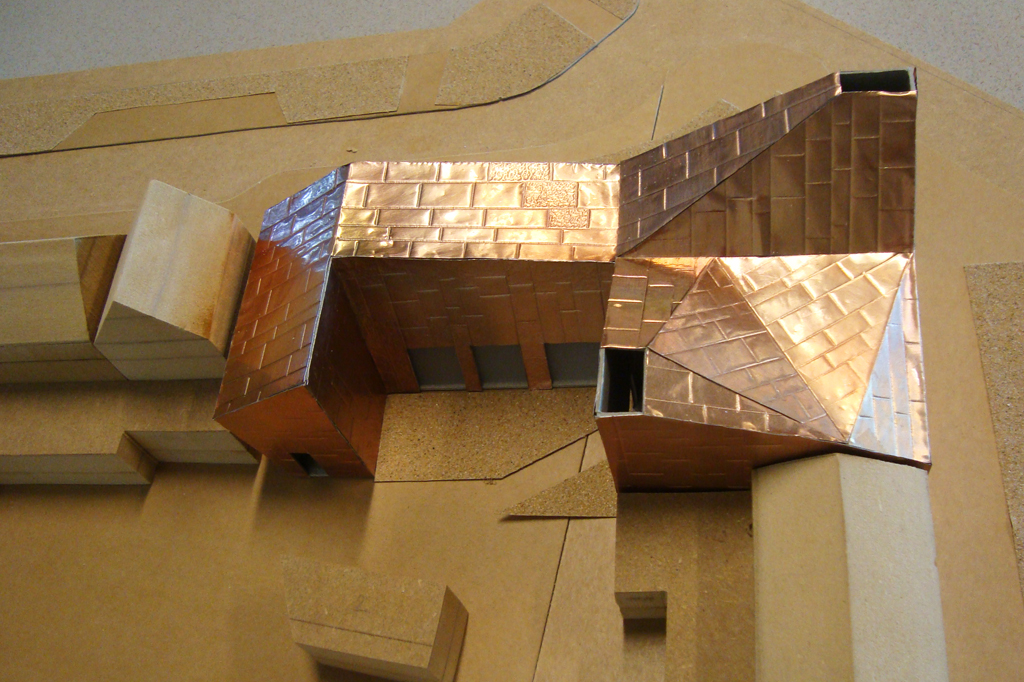Eindhoven University of Technology | Masterproject II
Professor: Tom Veeger
Program:The aim of this Masterproject was to make a critical analysis of the Eindhoven district Woensel-West and a design for a given corner of the street. The basic characteristic of the area is the fact that it is inhabited by 79 different ethnicities. The 62% are Dutch and the 20% of the non-Dutch are Turks. As far as the building environment is concerned, most of the houses are family houses, built before the Second World War. Besides the buildings’ physical problems, Woensel-West also has social problems. The social welfare position of a group of the inhabitants is not very strong and safety has been an issue for years. The design should contribute to the improvement of the inhabitants’ quality of life.
Concept
As almost half of the inhabitants are Muslims, I wanted to find a building program that would fulfill their needs and make their community stronger but at the same time give them the chance to mingle with the Dutch inhabitants. For this reason, I found out that the building of a small Turkish Hammam in the core of the district could meet these requirements. The hammam is a vital part of the islamic culture and an important element of the urban fabric of all the Islamic countries. Apart from the bathing ritual, the baths are a meeting point of the community. However, they can also be used by non-muslims that want to be initiated to the bathing ritual.Like its Roman predecessor, a typical hammam consists of three basic, interconnected rooms:
1. Cool room: Place for undressing and storing but also a place for people to enjoy their refreshments after bathing.
2. Warm room: This is the room where the body adjusts to the high temperature.
3. Hot room: Usually it is of square ground plan in the center of which an elevated marble slab is placed. On the walls cold water runs out of tabs in order for the bathers to keep their temperature in normal levels.
The main concept of the building is the design of a “wall” to the city that could turn the user away from the urban environment. Moreover, the interconnected rooms form a route in which the user’s perception of the building changes as he moves on in it. The light, the sight and the feelings differentiate from step to step in order to make the bathing ritual a unique experience.
The building
The building is developed between the two gardens. The user passes by the south garden which is part of the urban planning, enters the building block from the gap that the building forms with its surroundings and ends up crossing the interior garden in order to reach the hammam’s entrance. In the entrance hall one can hear the water falling from the built fountain on the left and see it through the semi- transparent wall which is formed by bricks especially designed for this use. Their pattern is inspired by the “jalis” used in Muslim temples. In the whole building the floor and ceiling level changes in order to enhance the mystical atmosphere of the hammam. After changing their clothes, the bathers walk by the fountain and the cold room and can take the stairs that lead to the second floor. They enter the warm room where the light comes from openings higher on the walls and the steam is already creating a special atmosphere. After staying in the warm room for a while, they enter the hot room where the light comes in an intensive way from the ceiling and refracts in the steam. In the hot room there are private bathing rooms, while on the second floor there is also a massage room. The bathing ritual finishes with the traditional Turkish tea at the cold room with the view of the north garden.The building’s shape is finalized after the design of its interior. The levels’ continuous change reflects on the final shape. Moreover, the need of the light in each room indicates the building’s openings. The building structure is made out of cement and is covered with COR-TEN steel in order to achieve a color matching with the neighborhood while at the same time its rough surface can make the difference. The steel is perforated with the pattern used in the semi-transparent wall where the windows are. Last but not least, when needed, the interior is covered with red Iranian Marble in order to create a familiar environment for the users.

 Natalia Mylonaki
Natalia Mylonaki